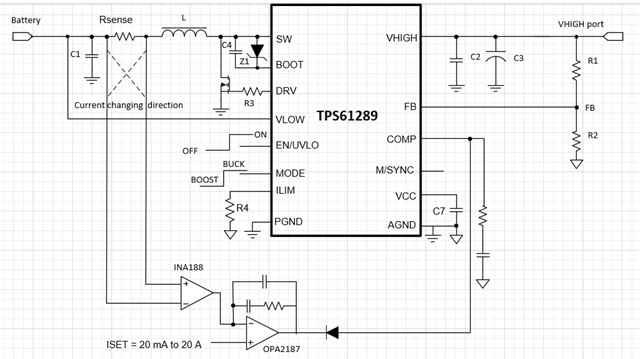Other Parts Discussed in Thread: TPS61289, TPS61094, , TPS61299
Tool/software:
Hi TI Team,
I was searching for a bidirectional buck/boost converter with a very low VIN for the backup power, since we like to use only one SuperCap (max. 2.7 V).
So, I found the TPS61289 which shows excellence data.
Requirement is:
- Use one SuperCap as backup supply
- Output Voltage: 5 V (normal operation mode), 4.5 V or also 5 V in backup mode
- Output Current: Backup Mode: 500 mA (max), 250 mA (nom), Normal operation mode: 1 A
- We are already using the TPS61094 for lower power requirements. But this will not work for the new requirments, at least not with one TPS61094.
I have opened already another thread for this specific question Using TPS61094 in parallel mode, just for reference.
I have ordered already the evalboard TPS61289EVM and was now surprised, that I can't achive my goals on the board.
From all the parameters I see now, maybe this task is not achievable, but maybe I understand something wrong.
Will it be possible to use the TPS61289 for this scenario (backup power supply with charging function for SuperCap)?
- I like to have a maximum charge voltage for the SuperCap of 2.7 V and a maximum charge Current of 300 mA (setable with some resistor or voltage divider)?
- SuperCap should discharge as low as possible. VIN is stated as 0.5V in the datasheet (only in the head line...)
Manuall switch over between charging and discharging would be understood.
Thanks for your answer in advance,
Christian


